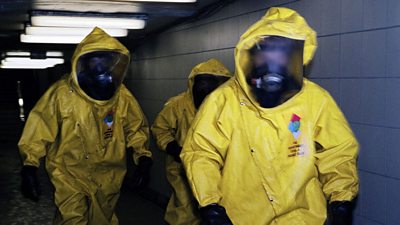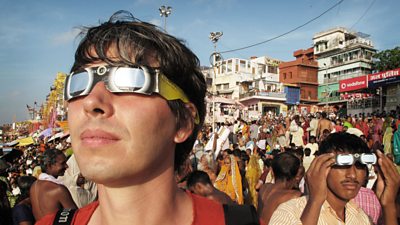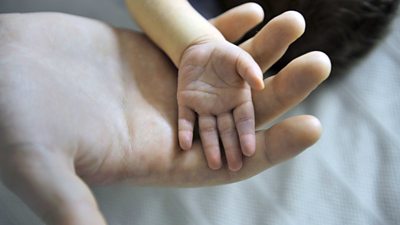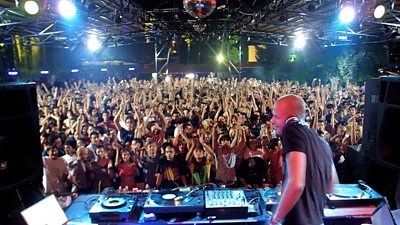This guidance assumes that a specialist laser display company is contracted to provide the equipment and the operators. The ���˿��� role is to ensure that a competent contractor has been selected, that they have robust plans to manage the display and that those plans are put into effect. You do not have to have any expertise in Lasers to be able to manage the specialist contractor.
Where a show with display lasers being used is not under ���˿��� control, it is extremely important to ensure that all crew, who could be working on or close to the stage are protected from any harm and/or injury. See ‘Division Specific Issues’ for further guidance.
What Can Go Wrong?
- All display lasers are very powerful and even at distances of hundreds of metres can cause permanent damage to the eyes. The back of the eye can be burned before you can blink. The burn may often be small and pass unnoticed but cumulative exposure will cause progressively greater damage to vision. Significant eye damage can occur from a single exposure.
- Even small burns can sometimes cause permanent damage. In a worst case they can cause devastating and permanent eye damage. The distance over which a laser can cause eye damage is called the Nominal Ocular Hazard Distance (NOHD).
- Display laser energy is so powerful that reflections from, for example, satin finish metal are still hazardous.
- Fire
- Distracting/Dazzling for Drivers and Pilots
- Damage to sensitive electronics in Cameras
Legal/���˿��� Requirements
- The ���˿��� does not permit the intentional projection of lasers onto audience members "audience scanning".
- Display companies may ask you to permit the use of "diffracted" beams to "scan" audiences. The ���˿��� does not accept that there is a reliable way of ensuring that the level of diffracted light is safe, so we do not permit this.
Control Measures
Before the Event
- Select a company from the pre-vetted list
- Provide them with as much information about the event and the venue as you can. Update them as details change.
- We expect them to comply with the guidance in the HSE document The Safety of laser lighting displays (indg224) and Guidance for the Safety of Display Lasers (see Recommend links) they should be familiar with all the guidance and should tell you if in any respect they can't meet it and what alternative arrangements they put in place.
Obtain a copy of their risk assessment and ensure that it contains as a minimum:
- Name of the Laser Safety Officer
- Make and Model of the Laser
- Its power when operating normally
- its power when operating at Low Power
- Whether it is Continuous or Pulsed. If Pulsed then they should include the pulse characteristics
- Wavelength(s)
- Nominal Ocular Hazard Distance (NOHD)
- Beam width and divergence
- A statement saying that the LSO should be in charge of the display
- A description of the nature of the event, the venue, the arrangement of the stage, the way the lasers will be rigged and the audience.
- A description of how different people could be exposed to the hazard - for example the laser company personnel, the audience, the performers, the production crew.
- The measures to prevent lasers and mirrors being accidentally disturbed
- A drawing or diagram showing the clearance of the laser display above and to the sides of the audience. This should be at least 3m vertically and 2.5m horizontally from every audience position. (in practice 2.5m horizontally and 1m above the head of a person who is standing).
There should be a clear and explicit statement by the laser company that they understand that audience scanning is not to take place.
- Send the risk assessment to ���˿��� Safety and ask us to review it.
- Check that the display company has all the information that they require from the venue and producer and that they have enough time to rig (and de-rig) the display and to rehearse it with the venue unoccupied and, where relevant, with performers. Ideally arrange a meeting between them
- You do not need to take detailed measurements of the power of the laser or worry about its "Class". All display lasers are powerful enough to cause virtually instantaneous eye damage.
At the set-up / rehearsal and again at the event
- Check that nothing has changed - or if it has that those changes have been recorded.
- Ask to see the display and check that there is at least 3m clearance above seating and 2.5m to the side of audience positions.
- Confirm that any camera positions on stage or in front of the stage edge (i.e. on a pit track) are not affected by the laser display, or could have an impact upon the display (i.e. via surface reflections).
- Ensure all crew are briefed accordingly.
Division Specific Issues
Where a show with display lasers being used is not under ���˿��� control, at the laser set-up/rehearsal and again prior to the event ensure that:
- Any camera positions on stage or in front of the stage edge (i.e. on a pit track or mounted on a ‘jimmy jib’) are reviewed to determine if they could be affected by the laser display or could have an impact upon the display (i.e. via surface reflections).
- Take into account any other camera positions that may be affected – front of house and hoist cameras, for example.
- Ensure all crew are briefed accordingly.
- Display companies may be using diffracted beams to "scan" an audience, which has been agreed between the display company and the show organiser.
- It is extremely important to ensure that the level of diffracted light is safe within the areas that our crew maybe working. The levels of diffracted light must be measured and confirmed by a Laser Safety Officer.
- Note that damage to sensitive electronics in cameras can still occur with diffracted laser beams.
FAQs/Did You Know?
- A display laser can damage your eyes in a fraction of a second.
Useful documents
Recommended links
-
[Gateway]
-
PLASA industry guidance
-
HSE information
Skin and eyesight risk topics
-

CBRN and Industrial Spills
A guide to chemical, biological and radiation related hazards. -

Display Screen Equipment (DSE)
A safety guide to various types of workstation and how to address any health issues. -

Laser Light Effects
Guidance to using laser on productions -

Non-Ionising Radiation
An overview of the risks from exposures to non-ionising radiation, including UV, microwaves and electro-magnetic fields (EMF). -

Skincare and Dermatitis
A guide to looking after your skin and recognising the symptoms of dermatitis which is a reaction that occurs when our skin becomes inflamed. -

Strobe Lighting
Safety Guideline to strobe lighting used as a visual effect for entertainment performances.
More from SSR
-
Your platform to record accidents, risk assessments, assurance monitoring and inspections
-
Safety Equipment Stores
Just one number to call: 020 3614 5155 -
���˿��� Safety Guidelines
An A-Z of ���˿���'s Health and Safety Guidelines -
Safety Advice Line: 0370 411 0464 Email: safety@bbc.co.uk
- A-Z of ���˿��� Safety Guidelines
- Accident Reporting and Investigation
- ���˿��� Health & Safety Policy
- Contractors (incl. vetted lists)
- Contributors
- Fire Safety
- Freelancers
- Independent Production Companies
- Risk Assessment
- Safety Alerts
- Safety Responsibilities
- Safety Training
- Sets & Premises Safety Guide
Events guidance - key links:
- Exhibitions
- General Guidance
- Indoor Location Recce Checklist
- Outdoor Location Recce Checklist
- Major Incidents & Emergency Planning
- Marketing and Promotional
- Noise Exposure
- Planning and Management
- Responsibilities
- Responsibilities Form
- Laser Lighting Effects
- Strobe Lighting
- Temporary Stages and Rostra
Health topics - key links:
- (���˿��� network only)
- Contributors Fitness to Participate
- Display Screen Equipment (DSE)
- (���˿��� network only)
- First Aid and Welfare on Location
- International Travel - Risks & Health
- Manual Handling
- Mental Health: ���˿���page
- (���˿��� network only)
- Personal Health and Wellbeing
- Pregnancy
- Psychological Trauma Support & Trauma Risk Management (TRiM)
- Tiredness and Fatigue
- Travel Health Contacts
���˿��� High Risk - key links:
- CBRN and Industrial Spills
- Covert Filming
- Crisis Management and Security Support
- Demonstrations, Protests and Crowds
- Disaster Coverage
- Door Stepping
- (���˿��� network only)
- (���˿��� network only)
- Public Order
- Safety Equipment Stores
���˿��� Journalism - key links:
���˿��� Productions - key links:
- Aerial Filming and Airfields
- Animals: Displaying and handling for performance
- Boats: Working on
- Children and Young People
- Driving
- Electrical Equipment and Systems
- First Aid and Welfare on Location
- Food Safety (Cooking and Catering)
- Remote Location Working
- Roads and Streets: Working by
- Security of Productions on Location
- Stunts
- Tiredness and Fatigue
- Unmanned Aerial Systems (UAS aka Drones)
- Vehicles: Recording in, from and around
- Working at Height: Mobile Elevating Work Platforms
- Working at Height: Tower Scaffolds
���˿��� Radio - key links:
- (���˿��� Network only)
���˿��� Security - key links:
���˿��� Sport - key links:
About this site
This site describes what the ���˿��� does in relation to managing its health, safety and security risks and is intended for those who work directly for the ���˿���.
It is not intended to provide instruction or guidance on how third parties should manage their risks. The ���˿��� cannot be held liable for how this information is interpreted or used by third parties, nor provide any assurance that adopting it would provide any measure of legal compliance. More information
Some links on this site are only accessible when connected to the ���˿��� network
